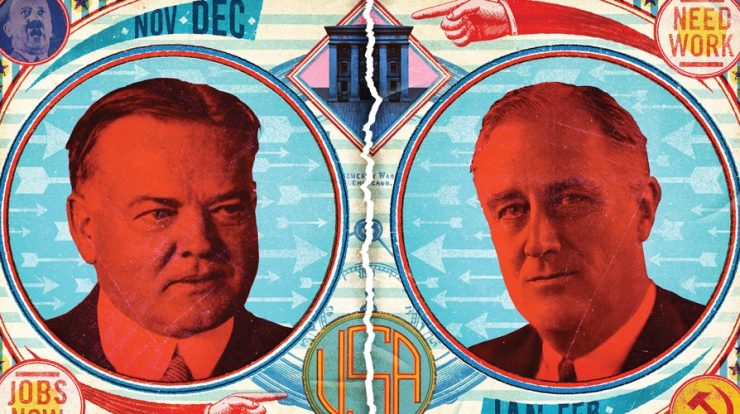Robert strayer ways of the world – Robert Strayer’s Ways of the World offers a captivating framework for understanding global history and the intricate connections between different world regions. This innovative approach sheds light on the unique characteristics of major civilizations and their interactions throughout time.
Strayer’s framework divides the world into five distinct regions: Europe, the Americas, Africa, Asia, and Oceania. Each region possesses its own unique geography, cultures, and historical trajectories. By examining these regions comparatively, historians can identify patterns, similarities, and differences that shape our understanding of the human experience.
Robert Strayer
Robert Strayer is a distinguished historian and academic specializing in world history. His contributions to the field have earned him widespread recognition and acclaim.
Strayer’s academic journey began at Princeton University, where he earned his bachelor’s degree in history. He subsequently pursued graduate studies at Harvard University, obtaining his master’s and doctoral degrees. Throughout his academic career, Strayer has held esteemed positions at leading universities, including the University of Chicago, New York University, and the University of Pennsylvania.
Research Interests
Strayer’s research interests encompass a broad range of topics in world history, with a particular focus on medieval Europe and the comparative study of civilizations. His work has shed light on the social, political, and economic transformations that have shaped human societies across time and space.
“Ways of the World” Framework: Robert Strayer Ways Of The World
Robert Strayer’s “Ways of the World” framework provides a comparative perspective on global history, examining the unique characteristics and developments of five major world regions: East Asia, South Asia, Europe, the Middle East, and the Americas.
Each region has its own distinct cultural, political, and economic trajectories, and the framework highlights the interplay between these regions throughout history.
Key Elements of the Framework
The framework is based on the following key elements:
- Five Major World Regions:East Asia, South Asia, Europe, the Middle East, and the Americas.
- Unique Characteristics:Each region has its own distinct cultural, political, and economic features.
- Interplay Between Regions:The framework emphasizes the interactions and exchanges between the different regions.
Global History and Comparative Analysis
Strayer’s framework provides a comparative perspective that facilitates the study of global history by allowing historians to analyze different regions of the world simultaneously. By examining the similarities and differences between societies, the framework enables historians to identify patterns and connections that transcend geographical boundaries.
Comparative Studies
Historians have used Strayer’s framework to compare different world regions and identify patterns of development. For example, scholars have compared the rise of agricultural civilizations in Mesopotamia and China, highlighting both the similarities and the unique factors that influenced their emergence.
Others have compared the development of urban centers in Europe and Asia, examining the role of trade, politics, and religion in shaping urban life.
Interregional Connections and Interactions
Interregional connections and interactions play a pivotal role in Strayer’s framework, emphasizing the interconnectedness of world regions throughout history. These connections have shaped cultural, economic, and political developments, leading to the exchange of ideas, technologies, and goods across vast distances.
Trade and Commerce
Trade routes, such as the Silk Road, facilitated the movement of goods and ideas between East Asia, the Middle East, and Europe. This exchange stimulated economic growth, introduced new technologies, and spread cultural influences, including religions and artistic styles.
Cultural Diffusion
Cultural diffusion occurs when ideas, customs, or technologies spread from one region to another. For instance, the spread of Buddhism from India to East Asia influenced religious beliefs and practices in those regions. Similarly, the adoption of Western scientific methods and technologies during the Scientific Revolution had a profound impact on global intellectual development.
Political and Military Interactions
Political and military interactions also shaped interregional connections. Empires, such as the Roman Empire and the Mongol Empire, connected diverse regions under a single political authority. These empires facilitated the exchange of ideas, technologies, and administrative systems across vast territories.
Migration and Population Movements
Migration and population movements have played a significant role in interregional connections. The movement of people, whether voluntary or forced, has resulted in the transfer of cultural practices, languages, and genetic diversity across regions. For example, the migration of Europeans to the Americas during the colonial period had a profound impact on the indigenous populations and shaped the cultural and demographic landscapes of the region.
Technological Innovations and Cultural Exchange
Technological innovations and cultural exchange have played a pivotal role in shaping the development of different world regions. These factors have fostered both similarities and differences among world civilizations, contributing to the rich tapestry of human history.
Impact on Cultural Exchange
Technological innovations have facilitated cultural exchange by enabling the movement of people, ideas, and goods across vast distances. The development of ships, for instance, allowed for maritime exploration and trade, leading to the spread of cultural practices, beliefs, and technologies between different regions.
The invention of the printing press, on the other hand, revolutionized the dissemination of knowledge and ideas, contributing to the growth of literacy and the spread of new cultural trends.
Role in Economic Development
Technological innovations have also had a profound impact on economic development. The invention of new agricultural tools and techniques, such as the plow and the seed drill, increased agricultural productivity and led to the rise of sedentary societies. The development of transportation systems, such as roads and canals, facilitated trade and the exchange of goods, fostering economic growth and specialization.
Industrialization, driven by technological advancements such as the steam engine and the assembly line, transformed economies and led to unprecedented levels of production and consumption.
Similarities and Differences among Civilizations
While technological innovations and cultural exchange have fostered similarities among world civilizations, they have also contributed to differences. The adoption of different technologies and cultural practices in different regions has led to the development of unique cultural identities and traditions.
For example, the development of writing systems in Mesopotamia, Egypt, and China gave rise to distinct literary and philosophical traditions in these regions. Similarly, the adoption of different agricultural practices and technologies in different parts of the world has led to the emergence of diverse culinary traditions and dietary habits.
Environmental Factors and Historical Change
Environmental factors have profoundly influenced the development of human societies throughout history. Climate, geography, and natural resources have shaped human activities, economies, and cultures.
Climate
Climate has played a crucial role in shaping human settlements and agricultural practices. Regions with favorable climates, such as warm temperatures and abundant rainfall, have historically supported large populations and advanced civilizations. Conversely, harsh climates, such as extreme cold or aridity, have limited human habitation and economic development.
Geography
Geography has also influenced human societies. Rivers, mountains, and oceans have served as barriers or facilitators of trade, communication, and cultural exchange. Access to navigable waterways, for example, has enabled the development of maritime trade networks and the spread of ideas.
Mountain ranges, on the other hand, have often isolated communities and hindered cultural diffusion.
Natural Resources
Natural resources have been essential for human survival and progress. Access to fertile land, water, and minerals has enabled societies to develop agriculture, industry, and wealth. The availability of specific resources, such as oil or precious metals, has often led to economic growth and political power.In
addition to these direct influences, environmental factors have also had indirect effects on human societies. For example, climate change has been linked to the rise and fall of civilizations, while the availability of natural resources has shaped political and economic systems.
Political and Economic Systems
Political and economic systems are fundamental structures that shape societies and their interactions. They encompass the ways in which power is distributed, resources are allocated, and decisions are made within a given community.
Throughout history, a diverse range of political and economic systems have emerged in different world regions, each with its own unique characteristics and implications for societal development.
Types of Political Systems
Political systems can be classified based on the distribution of power and the mechanisms through which decisions are made. Common types of political systems include:
- Monarchies: Power is concentrated in the hands of a single individual, usually a king or queen.
- Oligarchies: Power is held by a small group of individuals, often based on wealth, family connections, or military strength.
- Democracies: Power is vested in the people, who participate in decision-making through elected representatives.
- Theocracies: Power is derived from religious authority, and religious leaders play a central role in governing.
- Dictatorships: Power is concentrated in the hands of a single individual who has absolute authority.
Types of Economic Systems
Economic systems determine how goods and services are produced, distributed, and consumed. Key types of economic systems include:
- Traditional economies: Economic activities are based on tradition and custom, with limited technological innovation.
- Command economies: The government controls all aspects of the economy, including production, distribution, and pricing.
- Market economies: Economic decisions are driven by supply and demand, with limited government intervention.
- Mixed economies: A combination of market and command elements, with varying degrees of government involvement.
Influence on Societies and Interactions
Political and economic systems have a profound impact on the development of societies and their interactions with each other. Different systems can foster distinct values, norms, and social structures.
For example, democratic societies tend to promote individual rights, freedom of speech, and equality before the law. Command economies, on the other hand, may prioritize economic growth and stability over individual freedoms.
Moreover, political and economic systems can shape the nature of interactions between different societies. Economic interdependence, trade, and cultural exchange can foster cooperation and reduce conflict, while political differences and economic disparities can lead to tensions and rivalry.
Religion and Belief Systems
Religion and belief systems have played a pivotal role in shaping the cultures and histories of different world regions. They have provided a framework for understanding the world, guided ethical behavior, and influenced political, social, and economic life.
Religious ideas and practices have influenced the development of art, architecture, music, and literature. They have also been a source of conflict and persecution, as well as a force for peace and reconciliation.
The Spread of Religion
The spread of religion has been a major factor in global history. The Silk Road, for example, facilitated the spread of Buddhism from India to China and Japan. The Crusades brought Christianity into contact with Islam, leading to both conflict and cultural exchange.
The Role of Religion in Politics
Religion has often played a role in politics. In some cases, religious leaders have held political power. In other cases, religion has been used to justify political actions or to mobilize support for political causes.
The Role of Religion in Social Life
Religion has also played a significant role in social life. It has provided a sense of community and belonging, and it has shaped social norms and values. Religion has also been used to justify social hierarchies and to oppress women and other marginalized groups.
The Role of Religion in Economic Life, Robert strayer ways of the world
Religion has also had an impact on economic life. Some religions have encouraged economic activity, while others have discouraged it. Religion has also been used to justify economic inequality and to exploit the poor.
Commonly Asked Questions
What is the main concept behind Robert Strayer’s Ways of the World framework?
The framework divides the world into five major regions and examines their unique characteristics and interactions to understand global history.
How does the framework facilitate the study of global history?
It enables historians to compare different world regions, identify patterns, and explore the connections and influences between them.
What is the significance of interregional connections in Strayer’s framework?
Interregional connections have played a crucial role in shaping the development of different world regions, facilitating the exchange of ideas, technologies, and cultures.

